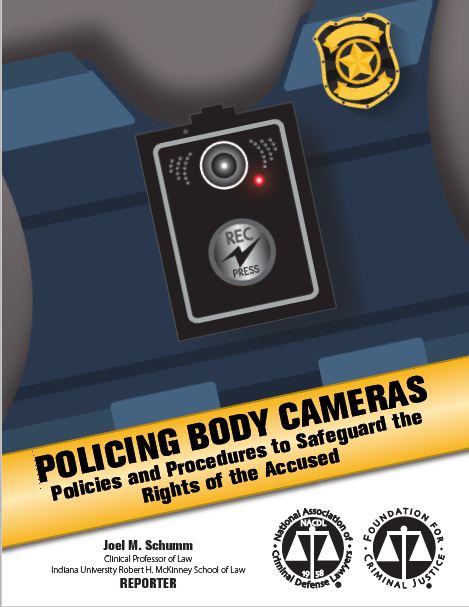BWCs and the Accused

To contribute to the important national debate about body cameras the National Association of Criminal Defense Lawyers (NACDL) then-President Theodore Simon established a working group in December 2014 and, in July 2015, the NACDL Board of Directors adopted a set of principles on b
